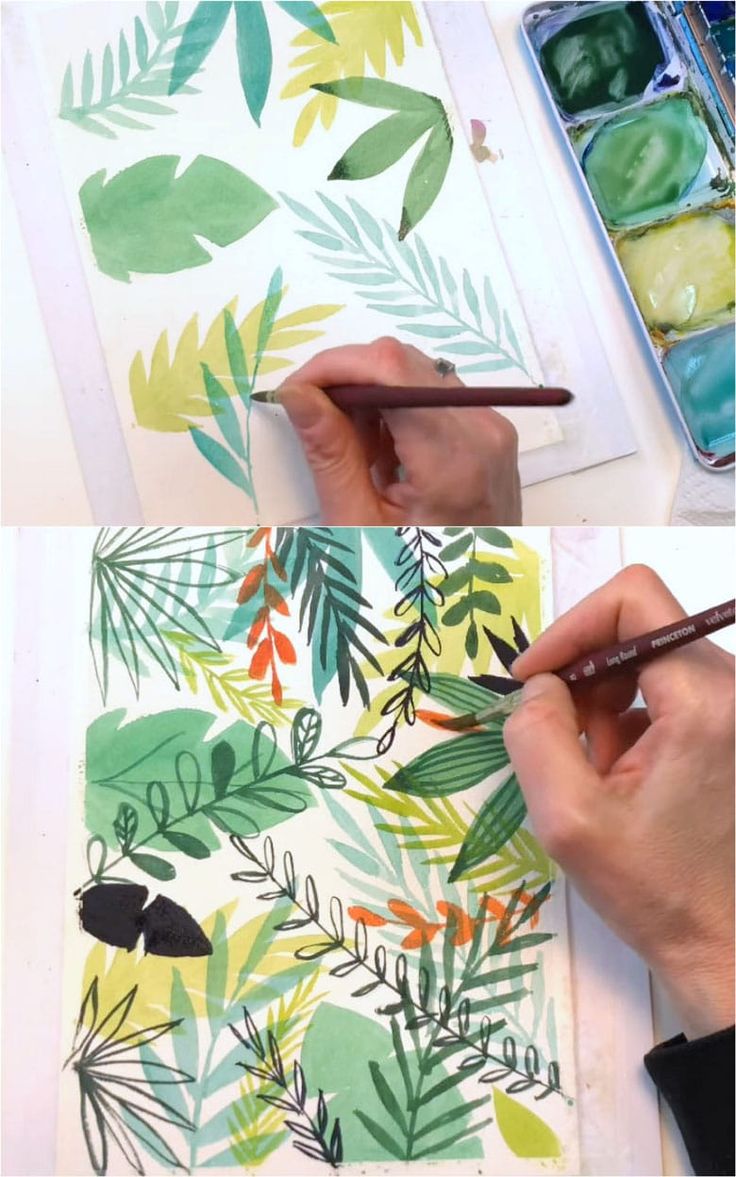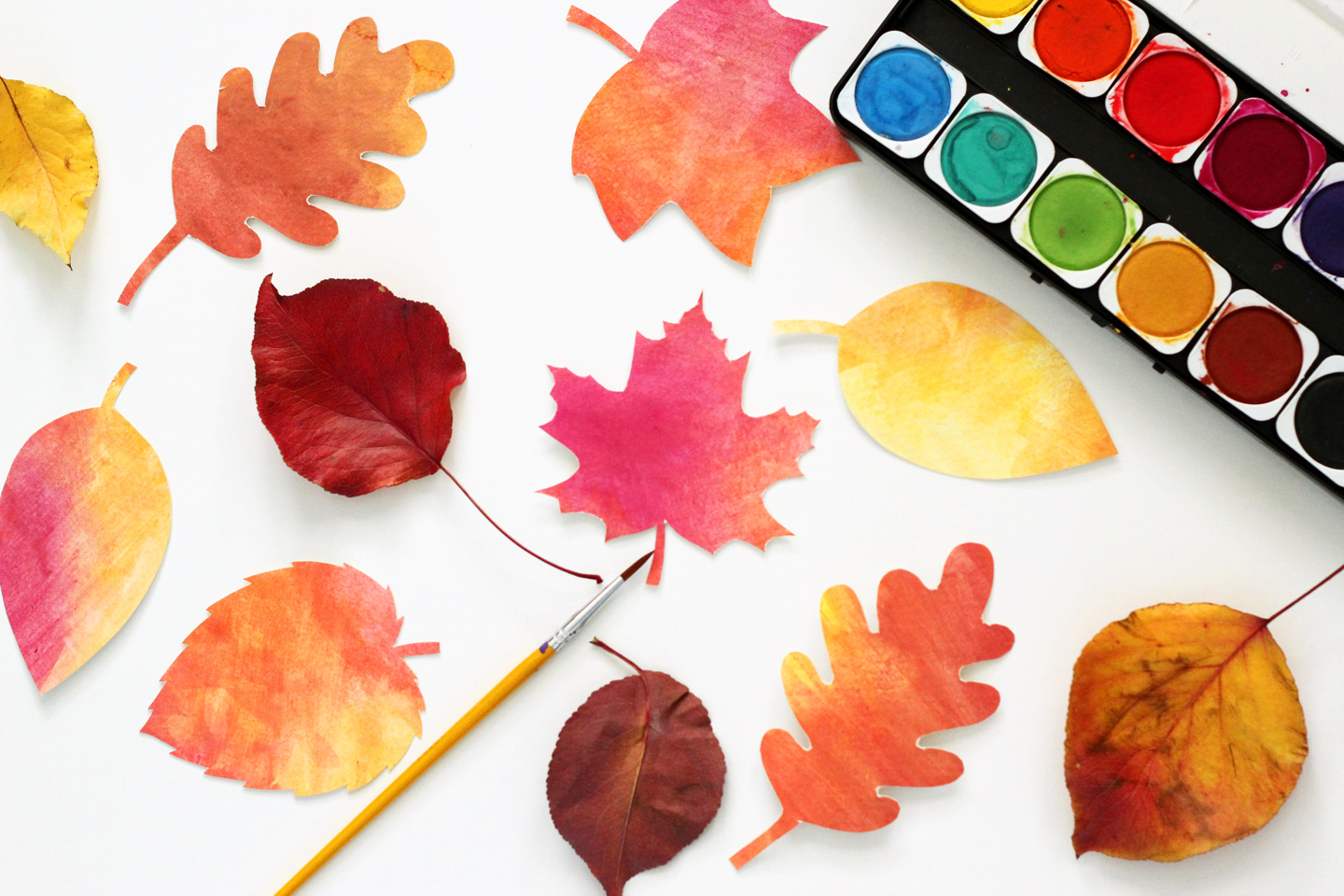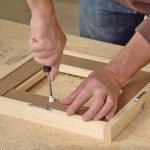Watercolor painting is a beautiful art form that allows artists to capture the intricate details and vibrant colors of nature. In this guide, we’ll explore various techniques for painting leaves with watercolors, enabling you to create stunning botanical artwork that celebrates the beauty of the natural world.
Understanding Leaf Anatomy: The Foundation of Botanical Painting
Before diving into painting techniques, it’s essential to understand the anatomy of a leaf. Leaves come in a variety of shapes, sizes, and textures, each with unique characteristics that influence how they are depicted in artwork. Take the time to observe different types of leaves and study their structures, including the main vein, secondary veins, and leaf margins. This understanding will inform your painting process and enable you to accurately capture the beauty of each leaf you paint.

Choosing the Right Materials: Setting the Stage for Success
Selecting the right materials is crucial for achieving beautiful watercolor leaf paintings. Start with high-quality watercolor paper, preferably one that is heavyweight and textured to provide the ideal surface for painting. Invest in a set of professional-grade watercolor paints in a variety of colors, including a range of greens for depicting foliage. Additionally, you’ll need a selection of brushes in different sizes and shapes to achieve various textures and details in your paintings. With the right materials at your disposal, you’ll be well-equipped to bring your leaf paintings to life.
Basic Watercolor Techniques: Building Depth and Dimension
Begin your leaf painting journey by mastering basic watercolor techniques that will form the foundation of your artwork. Practice techniques such as wet-on-wet, wet-on-dry, and dry brushing to create different effects and textures in your paintings. Experiment with layering washes of color to build depth and dimension in your leaves, paying attention to light and shadow to create a sense of realism. Remember to allow each layer to dry completely before adding additional details or colors to avoid muddy results. With practice, you’ll develop confidence in your ability to control watercolor and create beautiful leaf paintings.

Observational Drawing: Capturing the Essence of Nature
Observational drawing is an essential skill for botanical artists, allowing them to accurately depict the unique characteristics of each leaf they paint. Take the time to study leaves up close, paying attention to their shapes, patterns, and textures. Use a sketchbook to practice drawing different types of leaves from observation, focusing on capturing their essence rather than striving for perfection. Sketching from life will enhance your observational skills and provide valuable reference material for your watercolor paintings, enabling you to create realistic and lifelike representations of leaves.
Color Mixing Techniques: Achieving Realistic Foliage Colors
Mastering color mixing techniques is key to achieving realistic foliage colors in your watercolor leaf paintings. Experiment with mixing different shades of green using primary colors such as cadmium yellow, ultramarine blue, and sap green. Add touches of other colors such as burnt sienna or quinacridone gold to create depth and variation in your foliage. Remember to consider the season and lighting conditions when choosing colors for your leaves, as they can vary greatly depending on factors such as sunlight, age, and environmental conditions. With practice and experimentation, you’ll develop an intuitive sense of color mixing that will enhance the realism of your leaf paintings.

Detailing and Texturing: Adding the Finishing Touches
The details make all the difference in botanical artwork, so pay close attention to detailing and texturing your watercolor leaf paintings. Use fine-tipped brushes to add veins, serrated edges, and other intricate details to your leaves, taking care to vary the pressure and direction of your brushstrokes for a natural look. Experiment with dry brushing and lifting techniques to create texture and highlight subtle details in your foliage. Don’t be afraid to embrace imperfections and asymmetry, as they add character and authenticity to your paintings. By focusing on the small details, you’ll elevate your leaf paintings from simple studies to stunning works of art that capture nature’s beauty.
Exploring Composition: Creating Dynamic Leaf Arrangements
Composition plays a significant role in the visual impact of your watercolor leaf paintings, so take the time to explore different arrangements and compositions before starting your artwork. Experiment with placing leaves off-center, overlapping, or cascading across the page to create dynamic and visually engaging compositions. Pay attention to negative space and balance within your composition, ensuring that the arrangement feels harmonious and balanced. Consider incorporating other elements such as flowers, branches, or insects to add interest and context to your leaf paintings. By experimenting with composition, you’ll discover endless possibilities for creating captivating botanical artwork that celebrates the beauty of nature.

Refining Techniques: Elevating Your Watercolor Leaf Paintings
As you continue to hone your skills in watercolor leaf painting, there are several advanced techniques you can explore to further refine your artwork and push the boundaries of your creativity.
Layering and Glazing: Building Complexity and Depth
Layering and glazing are advanced watercolor techniques that allow you to build complexity and depth in your leaf paintings. Experiment with applying multiple layers of transparent washes to gradually build up colors and values, allowing each layer to dry completely before adding the next. This technique creates luminous, translucent effects that add richness and depth to your foliage. Additionally, try glazing different colors over each other to create subtle shifts in hue and temperature, enhancing the realism and vibrancy of your leaf paintings. With patience and practice, you’ll develop a mastery of layering and glazing that will take your artwork to new heights.
Negative Painting: Uncovering Hidden Beauty
Negative painting is a technique where you paint around the subject to create the illusion of depth and dimension. In the context of leaf painting, negative painting involves painting the spaces between leaves or around intricate details to define their shapes and create visual interest. Experiment with negative painting techniques such as wet-on-wet or wet-on-dry to gradually build up layers of color around your leaves, allowing the negative space to recede while the leaves themselves come forward. This technique requires careful planning and precision but can yield stunning results that highlight the beauty of your foliage in unexpected ways.

Exploring Mixed Media: Adding Texture and Dimension
Mixed media techniques can add texture and dimension to your watercolor leaf paintings, taking them beyond traditional two-dimensional artwork. Experiment with incorporating materials such as collage, ink, or pastels into your paintings to add tactile elements and visual interest. For example, you can use collage to create textured backgrounds or add dried leaves and other organic materials to your compositions for added realism. Additionally, explore using ink or pastels to add fine details and highlights to your foliage, enhancing the texture and depth of your paintings. By embracing mixed media, you’ll open up new avenues for creativity and self-expression in your artwork.
Conclusion: Embracing the Art of Botanical Painting
In conclusion, watercolor leaf painting is a rewarding and enjoyable artistic pursuit that allows you to connect with the beauty of the natural world. By understanding leaf anatomy, choosing the right materials, mastering basic techniques, and honing your observational and compositional skills, you can create stunning botanical artwork that captures the essence of nature. Whether you’re a beginner or an experienced artist, exploring the art of botanical painting offers endless opportunities for creativity and expression. So grab your brushes, venture into the great outdoors, and embark on a journey of exploration and discovery as you capture nature’s beauty one leaf at a time.







